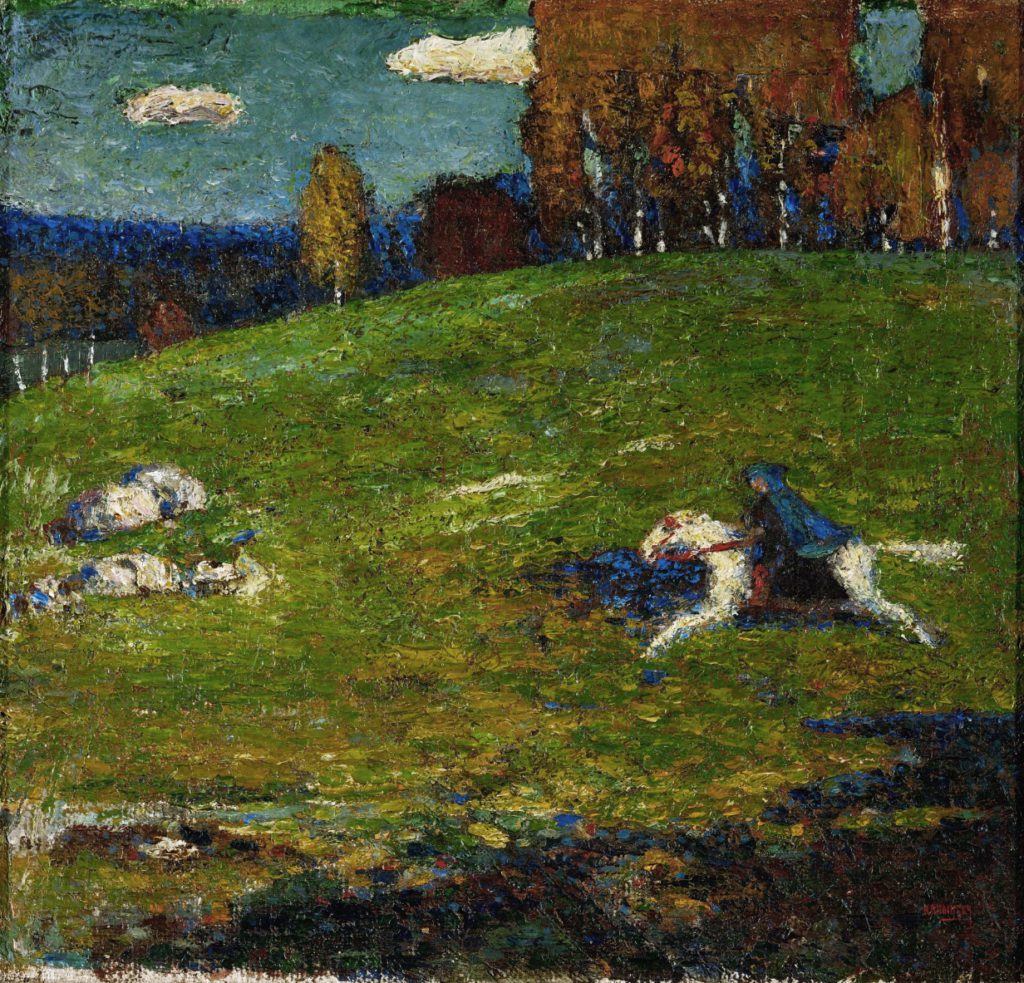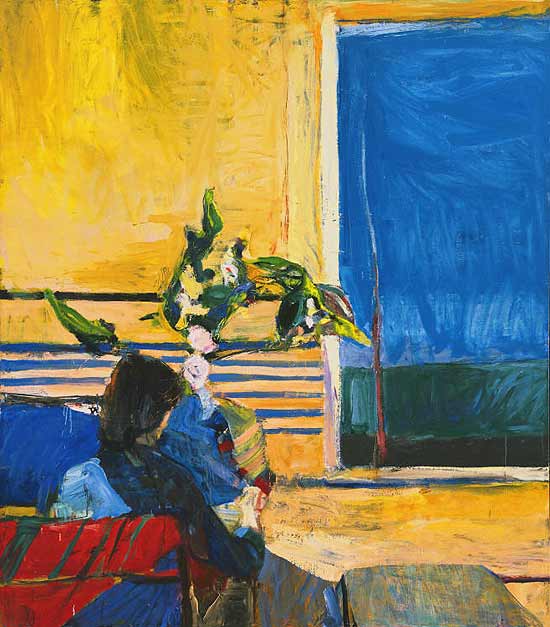
TOP 10 The Most Favourite Abstract Paintings
1. Che Guevara by Gheorghe Virtosu


In his paintings, the artist portrayed a variety of political figures, including the revolutionary Che Guevara. Virtoso is one of the most influential and popular artists of the twenty-first century.
Che Guevara’s painting was painted in 2015. Its original size is 59*54 inches, it is quite big. In this painting, the artist combined figure and abstraction. On the one hand, we can tell that this is the head of a famous revolutionary, but the figure is a little hazy. The first thing that came to mind was an open portal to hell.
This is due to the black color around the painting’s perimeter and the red color in the center. Che Guevara’s head cooking in a cauldron of molten metal or at the bottom of a volcano.
Face’s many bright and different colors fascinate me. There are also very interesting nose, chin, and neck shapes. In this drawing, it’s easy to imagine a variety of faces.
2. The Starry Night by Vincent Van Gogh

You’ve most likely seen this image before. It’s difficult not to notice it because it’s Van Gogh’s most famous work. Many people admire this artwork, but few are aware that the artist painted it in a mental hospital, most probably while under the influence of some psychological drugs. Another interesting fact is that while in this psychiatric hospital, he cut off a piece of his ear. He did it without a doubt with the help of some magical pills.
3. Group X, No. 1, Altarpiece by Hilma Af Klint
Colorful, unusual, alien figures are everywhere in this talented artist’s paintings. She reduced showing her work at exhibitions for a long time because she was afraid that people would not understand her. There is a sense of greatness in this artwork. A pyramid with steps that lead to the sun. It appears that this is a temple where people worship the sun.

4. Blue Poles, 1952 by Jackson Pollock
Why was Pollock’s painting named “Blue Pillars”? I’m curious what you think about this; do you see any pillars in the image? You probably noticed some curved parallel lines at first glance because they are drawn very boldly. But what is the significance of these pillars? Perhaps he trying to highlight a sense of insecurity and destruction?
An interesting fact is that, at the start of his career as an artist, Pollock did not name his paintings, but instead given them numbers. This image was previously ranked 11th.

5. Woman III – Painting by Willem de Kooning
The woman depicted on the painting is quite unusual. All of the women painted by the artist are distinguished by the fact that it is necessary to thoughtfully and continuously observe his work in order to reveal the meaning invested in this work. The originality and unusual character of the heroines set the great master apart from his contemporaries.
The painting “Woman 3” differs from the rest of the artist’s work. He described each of the women in the same manner. The same heroine is depicted in a variety of ways. How?
What differs the lady in this artwork from the other women? Surprisingly, all of the women were thoughtful or serious. However, the individual in question is very good-natured and cheerful. Because her eyes are wide open, it’s possible that she’s overly trusting and naive. This leads to another conclusion. This person’s naiveté is most likely due to her young age.

6. Girl before a Mirror – Painting by Pablo Picasso
Picasso painted his beloved in this lovely painting. We can describe this masterpiece as unusual and experimental. Picasso attempted to draw exactly the image in the mirror, which proved difficult because the view in the mirror differed significantly from the original. The name of the girl is Maria Theresa Walter, and she was the inspiration for Picasso to create this painting.

Painting by Pablo Picasso
7. The Blue Rider – Painting by Wassily Kandinsky
In 1903, Kandinsky painted the Blue Horseman, which became his trademark. That is, whenever one thinks of Kandinsky, this is usually the first image that comes to mind. But why did Vasily include a horse and a man in his drawing? Because he loved horses, as did his friend Marc France, with whom they came up with a name for this painting over a cup of coffee. The rider is depicted in a straightforward manner, which adds to the picture’s realism. When I look at this canvas, I think I hear the sound of hooves.

8. Girl with Plant, 1960 by RICHARD DIEBENKORN
Richard created this lovely painting in 1960. The original measures 80*69 1/2 in. This artist primarily painted in the Abstract Expressionism style. His favorite subject to draw is various landscapes on America’s west coast. His favorite location was Santa Monica, where he created many paintings, implying that inspiration reached him most frequently there. Many people compare his paintings to those of Willem de Kooning, but Richard created his own unique drawing style. He used colors in such a way that the light falling on them gave the impression that you are in a room or in nature.

9. View of Notre-Dame – Painting by Henri Matisse
Matisse created this oil painting in 1914. He liked to experiment that times. This artwork is also used in one of the experiments. It is known that he first drew a more detailed view of Notre Dame, but later he changed everything. He greatly simplified the composition’s geometry. Henri Matisse had a significant impact on the development of abstract art in America, though rather years after his death.

10. Improvisation 21a – Painting by Wassily Kandinsky
This is the image that comes to mind when I think of Kandinsky. A lot of vibrant colors, breathtaking scenery, and some wild swings that you can ride like a gondola.
He made extensive use of his knowledge of light theory and abstract art when creating this work. He began working on it in 1910 and completed it in 1911. He proceeded to make several more similar paintings after this one. We can see not only an interesting abstraction, but also the outlines of houses, thanks to the black lines and various tonal blocks.
He created all of his works, including this one, from the bottom of his heart. He drew them expressively because he didn’t want to draw them any other way. Many of the paintings created at the time are very similar to one another. Of course, a person who first saw his paintings at the time would have a difficult time distinguishing them. Only someone who has meticulously studied the details will notice a difference in his paintings.
Many of his paintings were created precisely through improvisation. The number of figures and images he created was determined by the number of subconscious thoughts he had. Because his paintings are unique, his mind can be described as bold and innovative. His paintings appear modern and stylish even in the twenty-first century, thanks to their interesting and bright colors.



